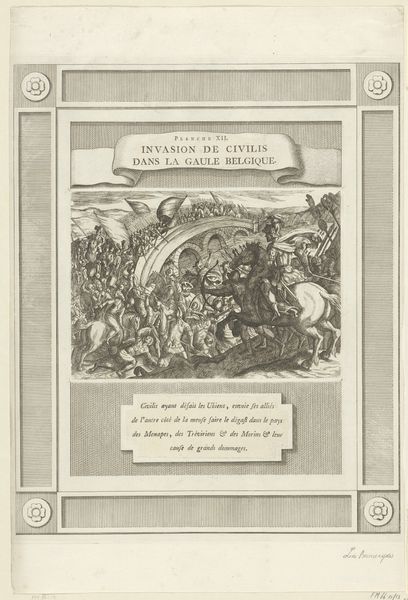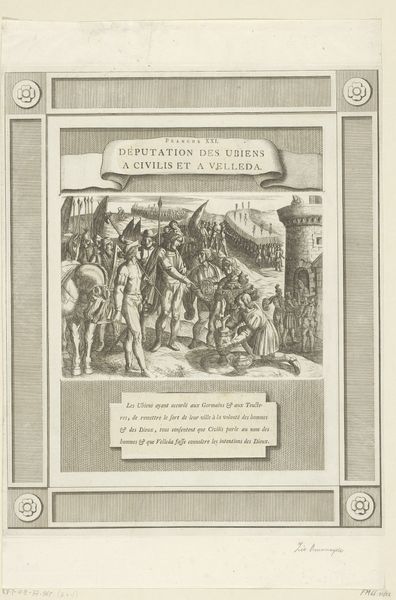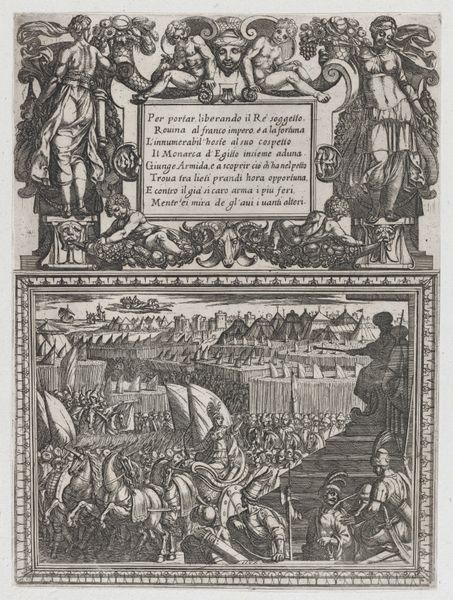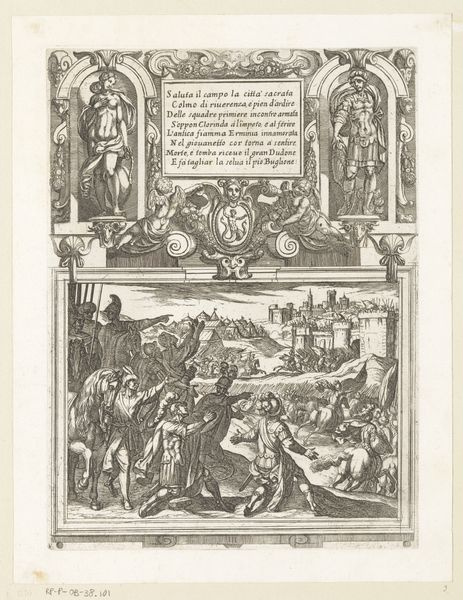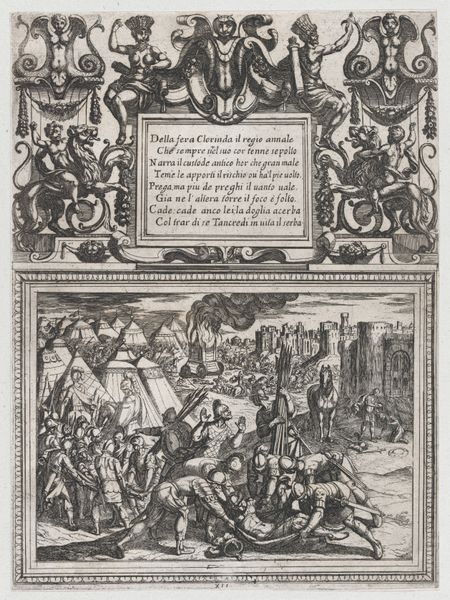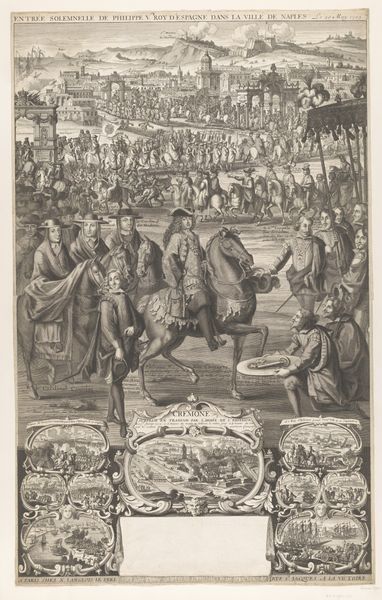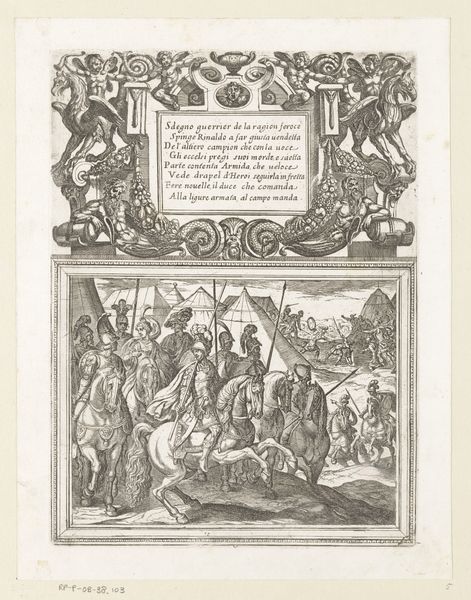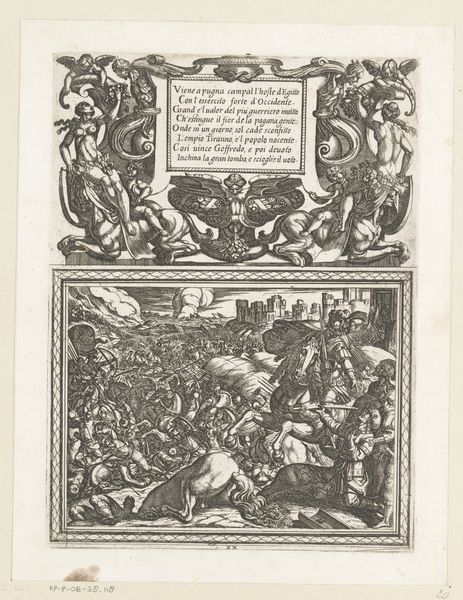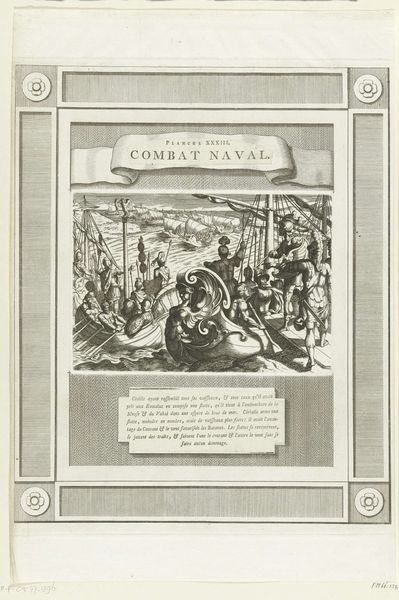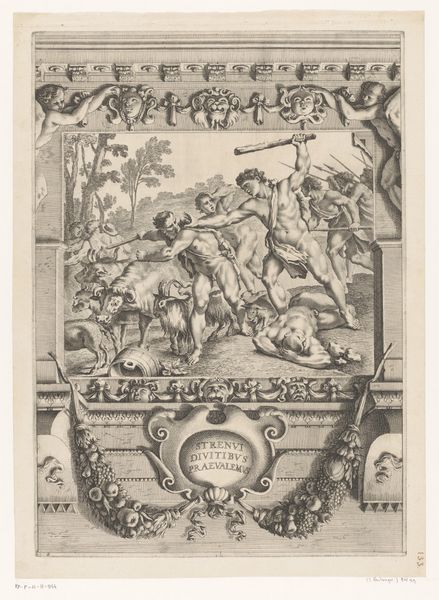
Dimensions: height 140 mm, width 202 mm, height 370 mm, width 300 mm
Copyright: Rijks Museum: Open Domain
Editor: Here we have "Bataven bij Trier verslagen door Cerialis, 69-70," a print from 1768-1770 currently housed in the Rijksmuseum. It's quite a dynamic scene of a battle. It makes me think about historical narratives being shaped. What do you see in this piece? Curator: It's a Baroque engraving depicting a historical event, but let’s consider the historical context of *its* creation. In the 18th century, prints like these played a crucial role in disseminating information and shaping public opinion. This battle scene is not just about the event itself, but about how the Dutch chose to represent their history, their relationship with the Romans, and ideas about national identity through visual culture. Does that seem to resonate with you? Editor: That makes sense. So, this image isn't just about the battle itself, but about how people in the 18th century wanted to see that battle. It's about image-making. Curator: Precisely. How might this image serve to legitimize Dutch political or social structures of the time, connecting them to a glorious, albeit perhaps fictionalized, past? Consider that historical paintings and prints were often commissioned by the elite and functioned as propaganda, shaping narratives for the broader public. Who had access to art such as this at the time, and to what ends was that access granted? Editor: Wow, so even this seemingly straightforward battle scene is loaded with political messaging from the time it was made. That's a lot to consider! Curator: Indeed. It challenges us to look beyond the surface narrative and to consider the forces that shaped its production and reception. Editor: I will definitely think twice before just assuming an image tells a neutral story now! Curator: Wonderful, a truly important takeaway.
Comments
No comments
Be the first to comment and join the conversation on the ultimate creative platform.
